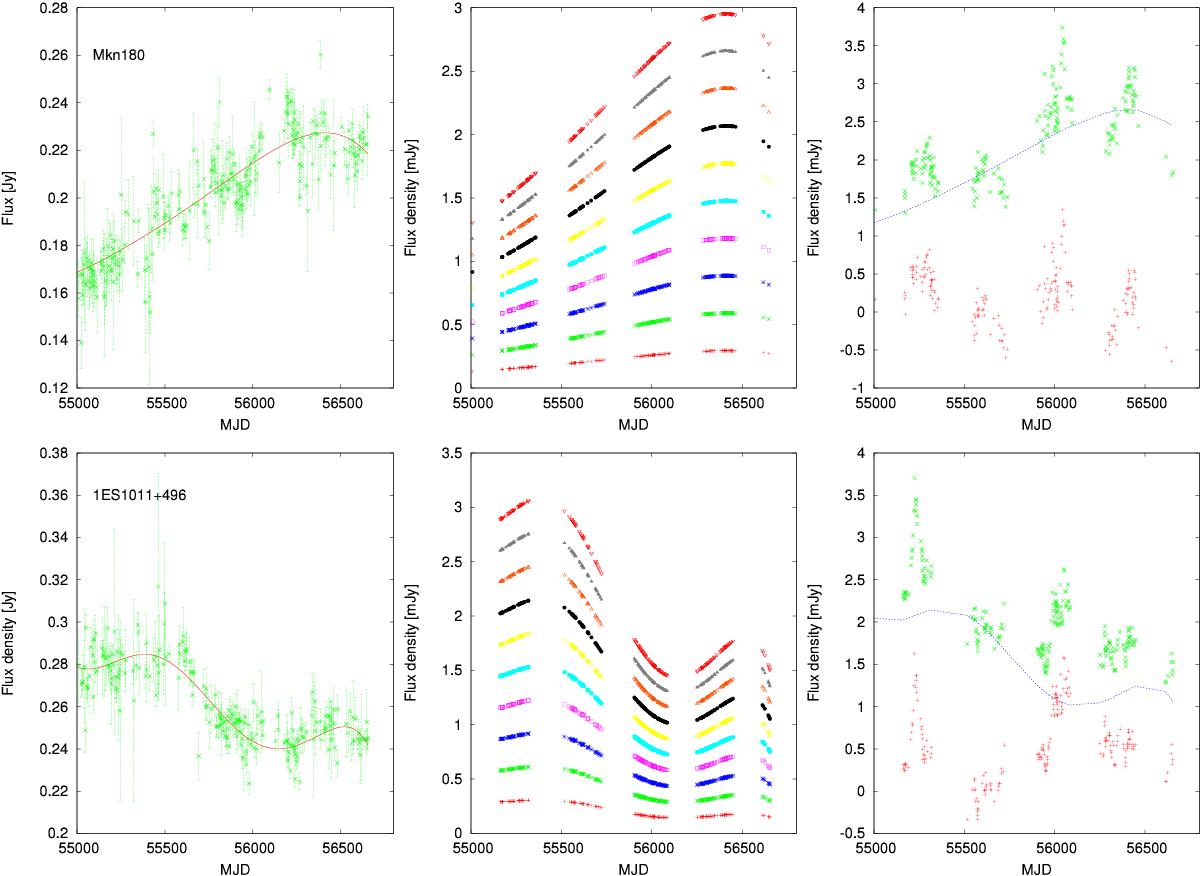Fig. 6

Three steps to estimate the contribution from the slowly varying component to the optical light curves for Mkn 180 (top) 1ES 1011+496 (bottom). Left: the polynomial (red solid line) is fit to the radio light curve (green symbols). Middle: the polynomial is scaled to the same average flux density as the optical light curve and then multiplied with 0.1 (red crosses), 0.2, 0.3, ... 1.0 (red triangles). These polynomial-multiples are subtracted from the optical light curve. Right: the optical light curve from which the polynomial-multiple that minimizes the rms (blue line, 0.9 for Mkn 180 and 0.7 for 1ES 1011+496) has been subtracted (red) and the original optical data (green).
Current usage metrics show cumulative count of Article Views (full-text article views including HTML views, PDF and ePub downloads, according to the available data) and Abstracts Views on Vision4Press platform.
Data correspond to usage on the plateform after 2015. The current usage metrics is available 48-96 hours after online publication and is updated daily on week days.
Initial download of the metrics may take a while.


